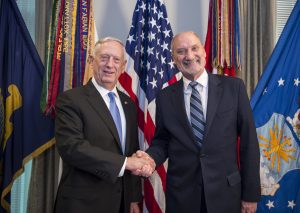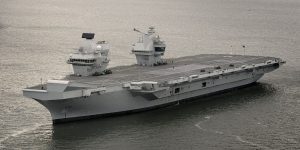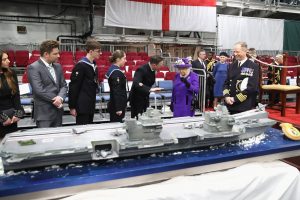2017-12-05 By Steven Blank
Western governments and commentators have both neglected to analyze Russia’s overall strategic campaign in the Middle East, rather than primarily focusing on its actions in Syria.
Focusing almost exclusively on Syria and/or on the issue of oil prices that Moscow is negotiating with OPEC and especially Saudi Arabia, they have ignored or simply overlooked the strategic dimension of Russia’s overall regional policies.
However, the recent announcements about Russian air and naval bases in Egypt and Sudan impel us to realize that across the Middle East and Eurasia, the Russian Federation pursues a deliberate strategy to negate Western (American) military capabilities while ensuring the expansion of Russian power in all its forms.
These recent announcements about an agreement to share air space in each country and the acquisition of an air base in Egypt and the concurrent discussions with Sudan for a naval base on the Red Sea coast highlight the range of Moscow’s objectives, the capabilities it can increasingly bring to bear in pursuit of those goals, and conversely Western strategic failure.
Air bases in Egypt and the use of Egyptian air space, along with a projected use of a Sudanese base on the Red Sea coast, allows Russia to expand its A2AD bubbles from the Arctic, Baltic, and Black Seas, the Caucasus and Central Asia regions into the Middle East.

It now has naval and air bases in Syria and is angling for another naval base in Egypt; while potentially seeking access to naval facilities and naval and air bases at Cyprus, Libya, and Yemen; and it already has potential access to a base in Iran.
Moscow will undoubtedly use its Egyptian air base to strike at anti-Russian factions backed by the West in Libya.
It also now has for the first time direct reconnaissance over Israeli air space and increasing leverage through its Egyptian and Syrian air bases upon Israel, something Israel has sought to reject since its inception as a state.
And in addition to the projected base in Sudan it now has the capability to strike at Saudi targets as well.
But the dimensions of Moscow’s achievement go further.
These bases register Russian military and political influence throughout the region.
Moscow will now have strike and/or ISR capabilities across the entire Middle East. In practical terms this means that the bases in Syria, Egypt, and probably in Iran give it the capability, along with its other bases inside Russia, including the Crimea, and in Armenia, to project power across the entire breadth and length of the Middle East.
Meanwhile, Russia will probably deploy its fire-strike weapons and integrated air defenses across these bases.
Should Moscow outfit these naval and air bases with UAV, UCAV, UUV, EW, and ISTAR capabilities and long-range cruise missiles, as is likely, Russia could then contest Western aerospace superiority throughout the atmosphere over these areas.
In other words, given the bases already acquired and those that Moscow still seeks, a naval base in Alexandria, bases in Libya and Cyprus, Moscow would be able to contest the entire Eastern Mediterranean.
And given its strong ties with Algeria we should not rule out the possibility that it seeks a deal along these lines with that government as well.
With the ability to contest the entire Mediterranean it will place NATO land, air, and/or naval forces at risk.
The bases in Sudan and Egypt will also have a similar effect in regard to the Suez Canal and Red Sea if not the Persian Gulf’s western reaches. Meanwhile Moscow probably still has the potential to recover the use of an Iranian base as it had at Hamdan and is seeking another one in Yemen as it had in Soviet times at Socotra.
If those new bases come into play and Moscow can deploy its long-range strike capabilities and integrated air defense network there as it has done at its already existing bases, then it will have coverage of the Mediterranean, Black Sea, Caucasus, and Central Asia that would make any Western operation in any of those theaters extremely hazardous and costly.

Given the existing bases in the Black Sea, Caucasus, and the Levant, Turkey is already almost totally surrounded and Balkan states and Italy could be vulnerable as well.
Arguably Russia is attempting to create what Marshal Ogarkov once called a reconnaissance-strike complex across the Mediterranean, Red Sea, Suez Canal, Caucasus, Central Asia, and Persian Gulf.
This is not only an issue of challenging the West’s reliance on an aerospace precision-fire strike in the first days of any war and thus Western and American air superiority.
These capabilities also threaten international energy supplies because Moscow can then use the threat of its naval and/or air power in the Persian Gulf, Red Sea, Suez Canal, and Mediterranean to interdict or curtail energy supplies that traverse these waterways.
Thus completion of this network of naval and air bases not only challenge Western aerospace superiority and key NATO or Western allies, these bases also consolidate Russia as an arbiter within each country’s politics where it has bases and as a regional one too.
Moscow also stands to gain enormous leverage on Middle Eastern energy supplies to Europe because it will have gained coverage of both defense threats and international energy trade routes.
Undoubtedly it will then use all these situations and assets to free itself from sanctions and propose a vast but nebulous anti-terrorist campaign that legitimizes its seizure of Crimea and the Donbass.
Meanwhile at the same time, in the Middle East its main interest is not peace but the controlled or managed chaos of so called controlled conflict.
Since “power projection activities are an input into the world order,” Russian force deployments into the greater Middle East and economic-political actions to gain access, influence and power there represent competitive and profound, attempts at engendering a long-term restructuring of the regional strategic order.[1]
One wonders what it will take to arouse regional and Western governments from their continued refusal to think and act strategically before it is too late.
[1] Henk Houweling and Mehdi Parvizi Amineh, “Introduction,” Mehdi Parvizi Amineh and Henk Houweling, Eds., Central Eurasia in Global Politics: Conflict, Security, and Development, International Studies in Sociology and Social Anthropology, Leiden, the Netherlands: Brill, 2004, p. 15.
Stephen Blank is an internationally recognized expert on Russian foreign and defense policies and international relations across the former Soviet Union.
He is also a leading expert on European and Asian security, including energy issues.
Since 2013 he has been a Senior Fellow at the American Foreign Policy Council in Washington, DC, www.afpc.org.
From 1989–2013 he was a Professor of Russian National Security Studies at the Strategic Studies Institute of the U.S. Army War College in Pennsylvania.
In 1998–2001 he was Douglas MacArthur Professor of Research at the War College.
Editor’s Note: The Russians will probe, push and seek to expand their influence and ensure that the expansion East of Europe stops.
Clearly, Putin will achieve greater recognition for Russian interests and power, and his policies in the Middle East are part of that effort.
That is inevitable.
Watching some in Congress acting like children thinking they are playing a game in their minds akin to pin the tail on the Donald are missing the point — there is a need to debate and forge a new strategy to deal with the Russians.
What is a realistic approach to engagement and deterrence with Russia?
Editor’s Note: If you would like to comment on this article, please go to the following:


 Secretary of Defense Jim Mattis hosts a bilateral meeting for Poland’s Minister of Defense Antoni Macierewicz Sept. 21, 2017, at the Pentagon in Washington, D.C. (DOD photo by Air Force Tech. Sgt. Brigitte N. Brantley)
Secretary of Defense Jim Mattis hosts a bilateral meeting for Poland’s Minister of Defense Antoni Macierewicz Sept. 21, 2017, at the Pentagon in Washington, D.C. (DOD photo by Air Force Tech. Sgt. Brigitte N. Brantley)
 Changing business rules allows for strategic redirection and agile evolution of the combat force. Credit Graphic: IBM
Changing business rules allows for strategic redirection and agile evolution of the combat force. Credit Graphic: IBM


 Within the context of this changing world, two main priorities underpin the White Paper. The first is Australia’s continued commitment to upholding the rules-based international order and pursuing increased trade.
Within the context of this changing world, two main priorities underpin the White Paper. The first is Australia’s continued commitment to upholding the rules-based international order and pursuing increased trade.
